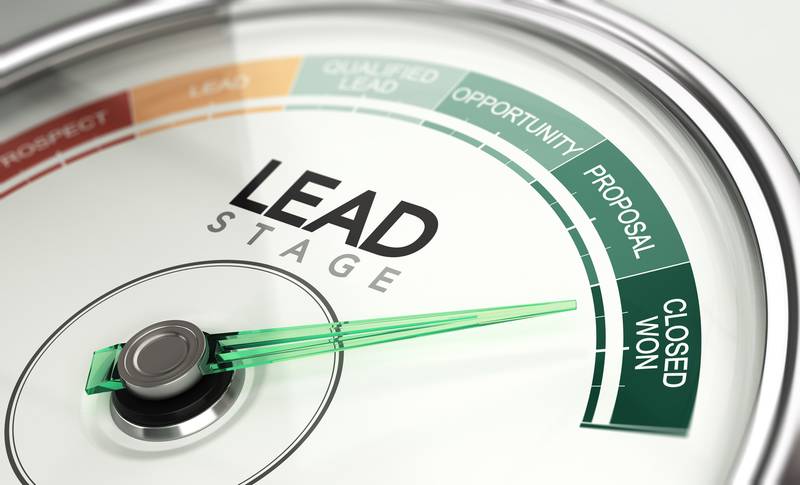You’ve spent hours crafting the best introductory email or preparing an engaging phone call. You’ve connected with a potential customer and they seem keen. You’re sure you’ll clinch that deal. But what next?
Don’t sit back and wait for that sales lead to call you back. You need to follow up. Here’s why:
60% of customers say no four times before saying yes (source: Invespcro).
80% of sales require five follow-up calls (source: Brevet).
In fact, a follow up strategy should form part of your sales process. It shows that you want to build a lasting relationship with a potential customer. It shows that you’re a dedicated sales professional who’s keen to help. And, did you know that an effective follow-up strategy can increase your conversion rate by up to 50% (source: HiverHQ)?
But what does the follow up process look like? How many follow-ups should sales teams make? Read on, to discover the power of the follow up process and the key rules for salespeople.
What is a Sales Follow Up?

Once you’ve done your initial cold call, cold email or sales pitch to a potential customer, your next step is the sales follow-up. That could be a phone call, email or message, and it’s an important piece of the sales puzzle.
Surprisingly, 48% of salespeople don’t make a single follow-up attempt (source: Invespcro). It may not be the most appealing part of the sales process, but it’s an effective one.
What’s the Optimal Number of Follow-Ups to Close Deals?
You can’t hurry B2B sales. Given that only 2% of sales are made on first contact, and 80% take between five and twelve contacts, you can see that persistent outreach and relationship nurturing pays.
Remember, you may not be that potential customer’s highest priority. They probably have an inbox brimming with emails that need their attention. Decision-makers have a plethora of demands on their time. If they’re ignoring you, it’s probably due to the 200 emails and tens of people trying to get time with them.
There’s a theory called the Rule of 7 which says that a customer needs seven touchpoints with a brand before buying from them. Well, those customer interactions include emails and/or sales calls.
So don’t rule out the prospective client who doesn’t send an email response or call you back. Just plan an effective sales call or email to grab their attention, and follow up with them.
How Long Should You Wait Before Sending a Follow-Up Email?
Don’t let a warm lead go cold. If you’ve had a positive first contact, follow up quickly.
Research shows that salespeople who follow up with a potential customer within an hour of receiving a query were 60 times more likely to qualify the lead than those who waited 24 hours or more (source: Invespcro).
1. Within 24 hours: send your first follow up email thanking them for their first meeting/ conversation. Summarise your discussion and recap on any action items mentioned. This first follow up can increase the response rate by 49% (source: Belkins).
2. When first action item’s due: follow up when the first action item raised in the meeting is due. Check for the best time to schedule the next meeting or send further information. Encourage action.
3. 2-5 days later: if you don’t hear back, try again in the next 2-5 days. Persistence pays.
4. Use action item deadlines: schedule your next follow up efforts in line with due dates of action items. You can always email in between to recap discussions and remind of next steps. Keep nurturing the relationship and providing helpful information.
5. Know when to stop: there’s a fine line between persistence and pestering. Once you hit double figures without a response, it’s probably time to walk away. Send a final email or voicemail to explain that you won’t be in touch again. That’ll either prompt them to act or signal the end of your follow up efforts.
A Few Follow Up Tips
Automation: utilise your sales tools and CRM to streamline workflows. Email templates are effective ways to create consistently appealing email marketing
Learn from analytics: check open rates and reply rates to work out how successful your outreach is and find ways to optimize your email sales strategy
Social media: 78% of sales professionals swear by social media for sales success. Use LinkedIn for lead generation and sales outreach, as well as to research your prospect and their company
Subject line: craft an eye-catching subject line that’ll stand out in a packed inbox
One size doesn’t fit all: work out where your potential client is along the sales funnel and tailor your contact with them accordingly. One channel (eg phone call or social media) will work better for one sales lead than another.
Create a winning sales follow up strategy
Case Study
PJ, the owner of UK Connect, a next gen wireless connectivity solutions, didn’t have an effective follow-up strategy. When he changed that and began to follow up diligently with prospective clients, he saw incredible results.
His UK Connect business rose from £120,000 to £2.2 million in turnover. He increased his team from 3 to 23 people. From a personal perspective, PJ learned how to step away from his business without it grinding to a halt without him.
Key Takeaways: Sales Follow Ups
 Reframe your perspective on the follow up – it’s about persistence and nurturing rather than pestering people. It’s an effective and important part of your sales cycle. Create an effective follow up strategy to ensure it’s part of your sales team’s everyday processes. It’s a proven technique for advancing sales and closing deals.
Reframe your perspective on the follow up – it’s about persistence and nurturing rather than pestering people. It’s an effective and important part of your sales cycle. Create an effective follow up strategy to ensure it’s part of your sales team’s everyday processes. It’s a proven technique for advancing sales and closing deals.
On a person-to-person level (which is often forgotten with B2B sales), you’ll build and strengthen relationships with potential clients. You’ll understand them better, uncovering their needs, pain points and challenges which helps you to find ways that your business can solve those problems.
So don’t give up at the first hurdle. Pick up the phone, or craft that message, and follow up with your sales lead today!




